THOMAS R. TRAUTMANN is professor emeritus of history and anthropology at the University of Michigan. He is the author of many books, including Dravidian Kinship, Lewis Henry Morgan and the Invention of Kinship, Aryans and British India, and India: Brief History of a Civilization.
The University of Chicago Press, Chicago 60637
2015 by Thomas R. Trautmann
All rights reserved. Published 2015.
Printed in the United States of America
24 23 22 21 20 19 18 17 16 15 1 2 3 4 5
ISBN-13: 978-0-226-26422-6 (cloth)
ISBN-13: 978-0-226-26436-3 (paper)
ISBN-13: 978-0-226-26453-0 (e-book)
DOI: 10.7208/chicago/9780226264530.001.0001
LIBRARY OF CONGRESS CATALOGING-IN-PUBLICATION DATA
Trautmann, Thomas R., author.
Elephants and kings : an environmental history / Thomas R. Trautmann.
pages : maps ; cm
Includes bibliographical references.
ISBN 978-0-226-26422-6 (cloth : alk. paper) ISBN 978-0-226-26436-3 (pbk. : alk. paper) ISBN 978-0-226-26453-0 (e-book)
1. ElephantsWar useIndiaHistory. 2. Asiatic elephantIndiaHistory. 3. IndiaHistory, Military. 4. IndiaKings and rulersHistory. 5. Asiatic elephantEcologyIndiaHistory. 6. Forest conservationIndiaHistory. I. Title.
UH100.5.E44T73 2015
355.4'24dc23
2014035716
Published for the world, excluding South Asia, by arrangement with Permanent Black, Ranikhet and New Delhi.
 This paper meets the requirements of ANSI/NISO Z39.48-1992 (Permanence of Paper).
This paper meets the requirements of ANSI/NISO Z39.48-1992 (Permanence of Paper).
THOMAS R. TRAUTMANN
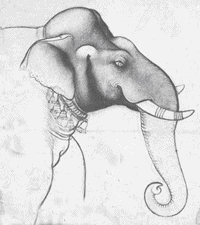
Elephants and Kings
An Environmental History
THE UNIVERSITY OF CHICAGO PRESS
Chicago and London
Contents
PROLOGUE
ELEPHANTS AND INDIAN KINGSHIP
THE SPREAD OF THE WAR ELEPHANT
AFTER THE WAR ELEPHANT
Illustrations
Chapter 1
Chapter 2
Chapter 3
Chapter 4
Chapter 5
Chapter 6
Chapter 7
Chapter 8
Sources and credits
After Wen Huanran 1995: 213. Map Nicole Scholtz, Elisabeth Paymal.
After Wen Huanran 1995: 214. Map Nicole Scholtz, Elisabeth Paymal.
After Sukumar 2011: 318. Map Elisabeth Paymal.
After Trautmann 1982: 265, Map 2. Map Elisabeth Paymal.
Data from EFT Report 2005: 15861. Map Nicole Scholtz, Elisabeth Paymal.
Data from Habib 1982. Map Nicole Scholtz, Elisabeth Paymal.
Data from Habib 1982. Map Nicole Scholtz, Elisabeth Paymal.
Mayer 1885, 5: 509. Digitization Wikipedia.
MacPhee ed. 1999: 258. Drawing Patricia J. Wynne. With kind permission from Springer Science and Business Media.
After Spate and Learmonth 1967: 47, Fig. 2.1. Map Elisabeth Paymal.
Marshall 1951, vol. 3, pl. 170, u, v. Reprinted with the permission of Cambridge University Press.
After Chowta 2010: 116, pl. 2. Drawing Elisabeth Paymal.
Davies 1973 vol. 2, pl. XXIII. Courtesy Art Resource/Metropolitan Museum of Art.
Maspero 1903: 137. Drawing Faucher-Gudin.
Wooley and Mallowan 1976. Photo University of Pennsylvania. Courtesy University of Pennsylvania.
Frankfort 1936: 95, Fig. 73. Courtesy of the Oriental Institute of the University of Chicago.
Laufer 1925, Figs. 17.
Hunan Provincial Museum. Asian Art & Archaeology, Inc./CORBIS.
Courtesy Harappa.com.
Courtesy Harappa.com.
Kenoyer 1998: 166. Photo Richard H. Meadow/Harappa.com. Courtesy Dept. of Archaeology and Museums, Govt of Pakistan.
Soar 2007: 180, Fig. 22.1.
Trustees of the British Museum.
Smith 1924: 276 (facing).
Akbarnama. Victoria and Albert Museum, London.
Akbarnama. Victoria and Albert Museum, London.
Akbarnama. Victoria and Albert Museum, London.
Drawing Rebecca Grapevine.
After Davies 1959: 6. Map Elisabeth Paymal.
After Davies 1959: 13. Map Elisabeth Paymal.
Data from Scullard 1974: 207, Fig. 19, Rance 2003, and Bosworth 1973. Map Rebecca Grapevine, Nicole Scholtz, Elisabeth Paymal.
Svoronos 1904: 2, pl. V, no. 9.
Budge 1907, 2: 150.
Fukai et al. 1983, pl. XI. Permission of the Institute for Advanced Studies on Asia, The University of Tokyo.
Canepa 2009: 97, Fig. 17. Photo Matthew P. Canepa. Copyright 2010, The Regents of the University of California.
The Louvre, OA 9063. Photo Chuzeville, Louvre. RMN-Grand Palais/Art Resource, NY.
Taylor and Aragon 1991: 64. Drawing Marcia Bakry. Courtesy the Smithsonian Institution.
Taylor and Aragon 1991: 65. Drawing Marcia Bakry. Courtesy the Smithsonian Institution.
Poncar and Maxwell 2006: 29. Photo Jaroslav Poncar. Courtesy Jaroslav Poncar.
Poncar and Maxwell 2006: 28. Photo Jaroslav Poncar. Courtesy Jaroslav Poncar.
Poncar and Maxwell 2006: 12. Photo Jaroslav Poncar. Courtesy Jaroslav Poncar.
Jacq-Hergoualch 2007: 62. Presses Universitaires de France.
Raffles 1817: 296 (facing).
Quaritch Wales 1952: 2012. Courtesy Bernard Quaritch Ltd.
Russell 1877: 282 (following). Engraving Sydney P. Hall.
Preface
SIMON DIGBYS WAR-HORSE AND ELEPHANT in the Dehli Sultanate: a study of military supplies (1971) is a great favorite of mine. It was a favorite of my students too, who loved it so much they would forget to return it after taking away my copy to read. And who can blame them? The power it holds over those who get it in their hands is such that they cannot bear to part with it.
This immortal work shows that the power of the Delhi Sultanate lay in its strategic location between the Ganga and the Indus valleys, and on the ability of its kings to control the eastward flow of horses and the westward flow of elephantsto the disadvantage of other North Indian kingdoms. It introduced me to the long-term structure of military supply for Indian kings that stretched back two thousand years from the time-horizon of Digbys book, and forward for the better part of a thousand. Digby helped me grasp, for a period much before the one of which he wrote, the significance of Megasthenes testimony that the Mauryan emperor held a monopoly of horses, elephants, and arms. This condition was starkly different from that of the Vedic period, which shows a warrior class definable by its ownership of horses, elephants, and arms. The contrast points to the novelty and power of the Mauryan army over all other Indian states of the day and accounts for its success in creating the first Indian empire. It also supplies the key to unlock a statement of Strabo. The Greek writers on India, said Strabo, were liars because they contradicted one another. Megasthenes account of the Mauryans opposed that of Nearchus, who described an India in which horses and elephants were privately owned, and everyone went about on some sort of animal mount or in an animal-drawn conveyance. I showed that the contradiction disappeared when one understood, as Strabo had not, that Megasthenes was describing the newly growing eastern power of the Mauryas, with its novel policy of a royal monopoly of the sinews of war, centered upon the Ganga valley. Nearchus on the other hand was describing an old-style late-Vedic regime of private ownership in the valley of the Indus, to the northwest. This idea got published as Elephants and the Mauryas (1982).
I believed the article had legs, and that there was very much more to be said about elephants and horsesbut especially elephants, and in relation to Indian kingship. I collected materials as I came across them, such as the Sanskrit texts on elephant science and the British-Indian literature on elephant management and care; the early work of Armandi,
Next page
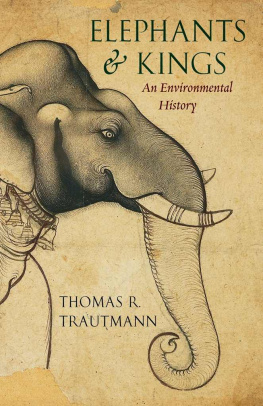
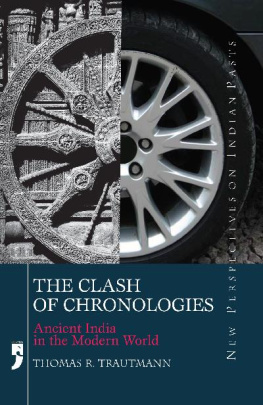

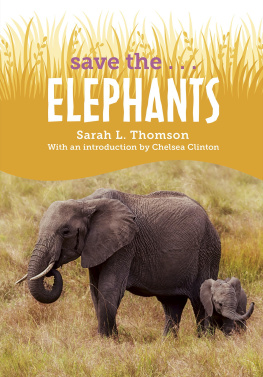

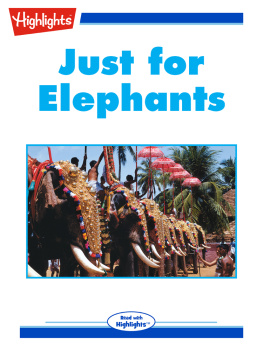

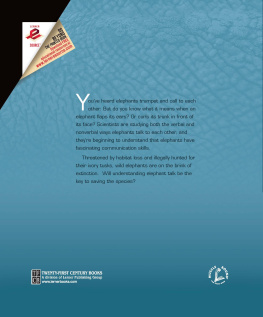
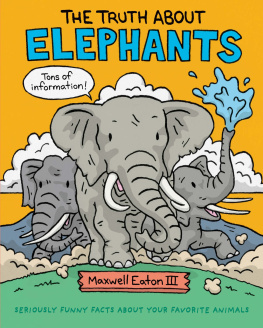
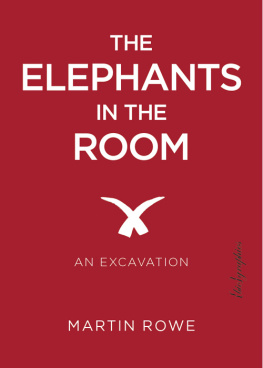
 This paper meets the requirements of ANSI/NISO Z39.48-1992 (Permanence of Paper).
This paper meets the requirements of ANSI/NISO Z39.48-1992 (Permanence of Paper).